Almost every culture and religion in history has had somewhere that the people within the group consider sacred.
It is estimated that there are over 4200 different religions that currently exist in the world today. This does not even take into consideration the potentially hundreds of thousands of religions that could have died out over the centuries.
With so many different religions and belief systems is is impossible for anyone to know where all of the sites that are considered sacred could be located.
These religions vary so much from one another and have all grown and evolved throughout time that the religious sites that we know about could be as young as a few years or as old as a thousand.
With so many to choose from, we have selected 20 of the Most Gorgeous Religious Sites Around the World for you to check out!
Here is our list of the 20 Most Gorgeous Religious Sites Around the World!
20. Hagia Sophia, Turkey
The Hagia Sophia is one of the most studied and visited religious sites in the world. Architecture students learn about the buildings dome structure. Art and Art History students study the incredible mosaics. History students study the role of the church in Roman and Turkish history.
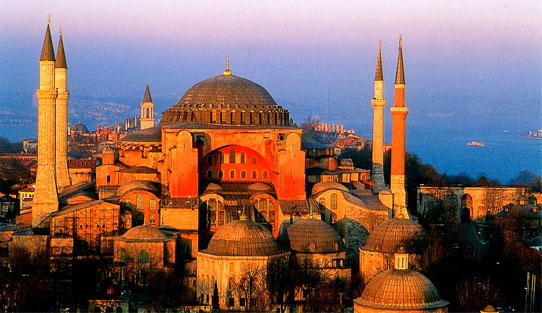
The Hagia Sophia’s website says this on the history of the gorgeous mosque turned museum:
“Rebuilt by the orders of Emperor Justinian in 537, for 900 years Hagia Sophia had been the center of Orthodox Christianity until 1453 when the city was concurred by Ottomans. 500 years following the conquest of Muslims, it became a jewel for the Muslim world and as the grand mosque of the sultans.
In 1935, Hagia Sophia had been converted into a museum of Turkish Republic by the orders of Ataturk, and became one of the most significant monuments not only in Turkey but on earth with its architecture and its historical richness.”

19. Basilica of San Vitale, Italy
The beauty of this church is found most prominently in the stunning mosaics.
Byzantine mosaics are known for bright colors and lots and lots of gold tiles. The mosaics in San Vitale cover most of the walls and ceilings. They feature scenes of Christ, the Apostles, various Prophets, the Three Magi, Emperor Justinian, and Empress Theodora.
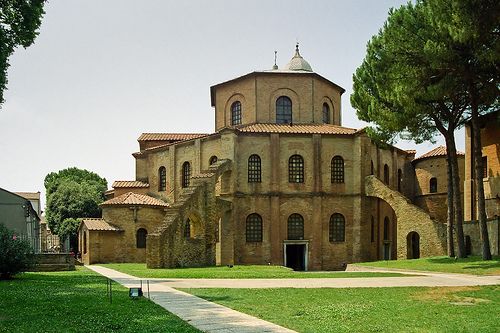
There are also many images that carry deep symbolism in the Christian religion. Symbols of lions, lambs, winged men and angels, eagles, oxen, and many other scenes found in the Bible.
The San Vitale Basilica began construction in 526 and finished in 548. Almost all of the mosaics and other artworks were completed during the original construction period.
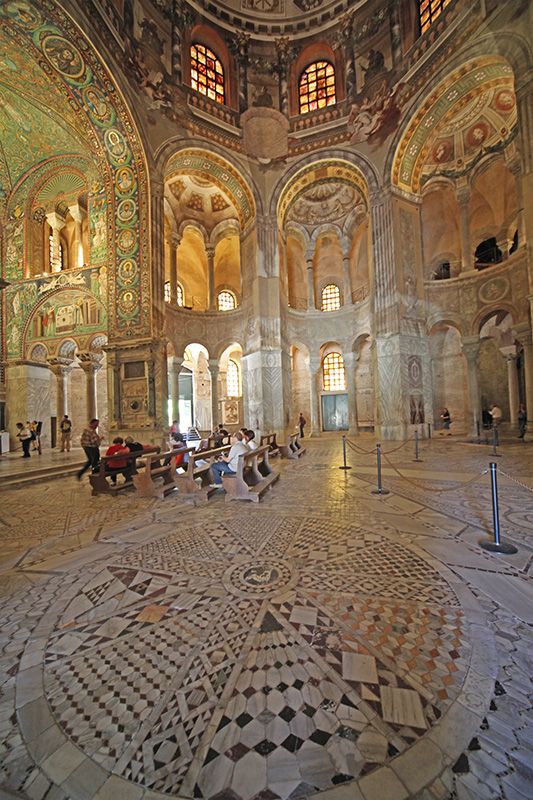
18. Angkor Wat, Cambodia
This site was named a world heritage site by the United Nations Educational, Scientific, and Cultural Organization. This means that there are many protections in place to ensure that the site is not damaged or destroyed. The UNESCO webpage says this on the importance of Angkor Wat: “Angkor, in Cambodia’s northern province of Siem Reap, is one of the most important archaeological sites of Southeast Asia. It extends over approximately 400 square kilometres and consists of scores of temples, hydraulic structures (basins, dykes, reservoirs, canals) as well as communication routes. For several centuries Angkor, was the centre of the Khmer Kingdom.
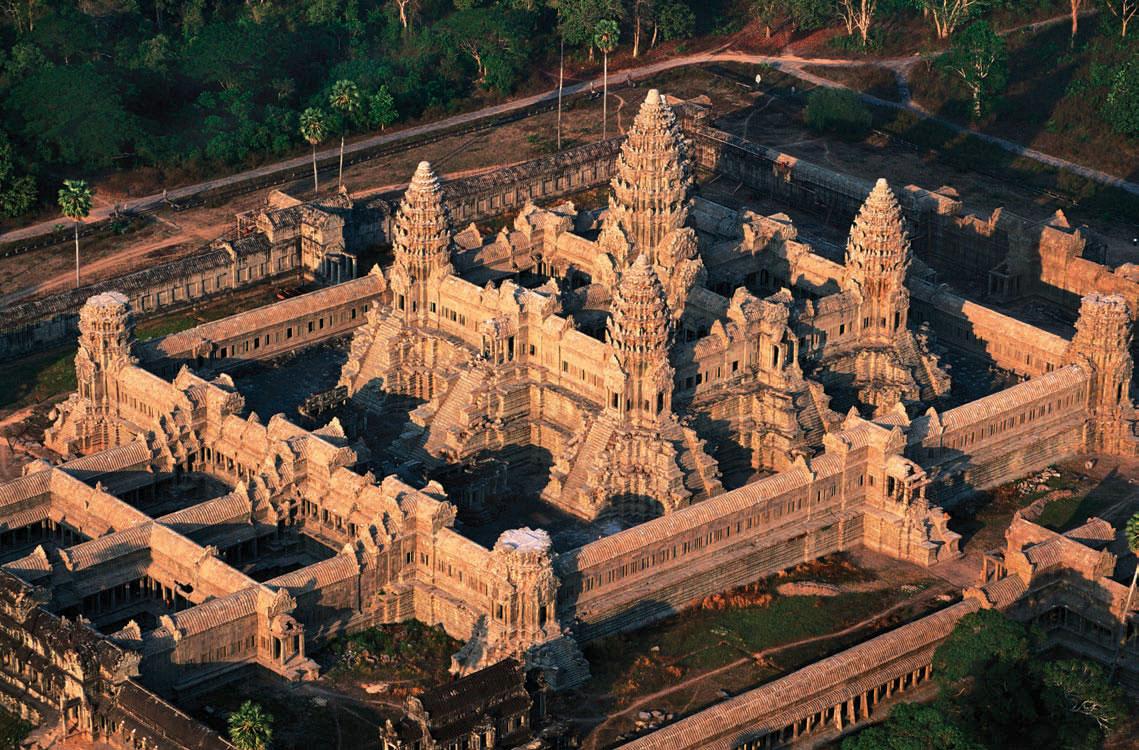
With impressive monuments, several different ancient urban plans and large water reservoirs, the site is a unique concentration of features testifying to an exceptional civilization. Temples such as Angkor Wat, the Bayon, Preah Khan and Ta Prohm, exemplars of Khmer architecture, are closely linked to their geographical context as well as being imbued with symbolic significance. The architecture and layout of the successive capitals bear witness to a high level of social order and ranking within the Khmer Empire. Angkor is therefore a major site exemplifying cultural, religious and symbolic values, as well as containing high architectural, archaeological and artistic significance.”
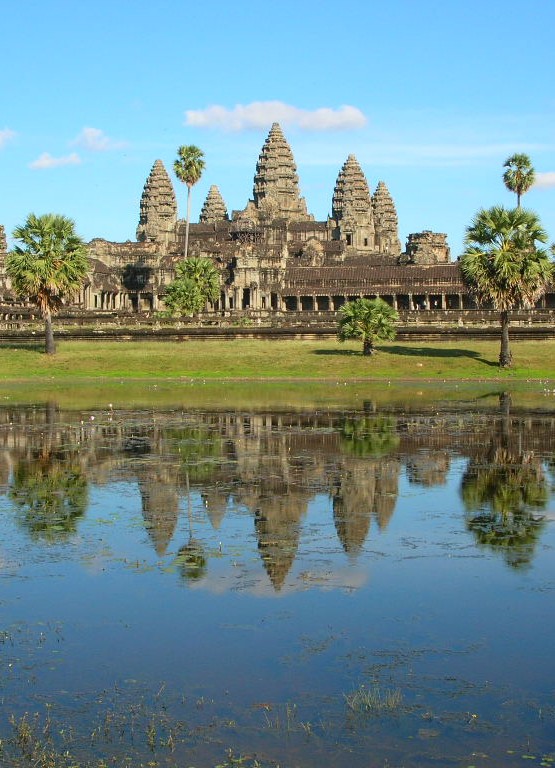
17. The Manila Philippines LDS Temple, Philippines
The site for this LDS Temple was dedicated and construction began in 1982. By the time the Temple was completed, in 1984, over 26,000 people had toured the structure. It was only the second LDS Temple built on the Asian continent.
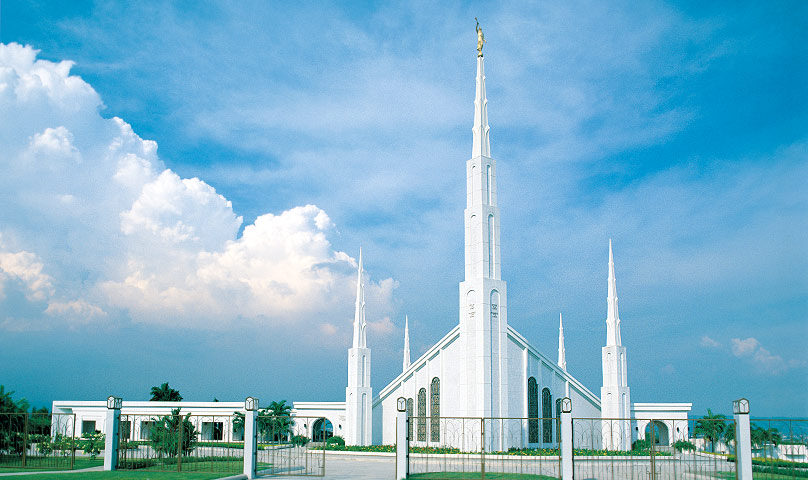
Ldschurchtemples.com posted this interesting tidbit about the Manila Philippines Temple:
“On Sunday, December 3, 1989, the grounds of the Manila Philippines Temple were overtaken as the last rebel stronghold in an attempted military coup to overthrow the government. A planned attack by royal troops that evening was miraculously called off. Nevertheless, prior conflict had left the patron housing facility extensively damaged, the temple annex with minor damage, and the temple proper unentered and unharmed except for a single bullet hole at the top of the highest spire. Six mortar or rocket shells had exploded on the grounds, some even passing between the spires.”
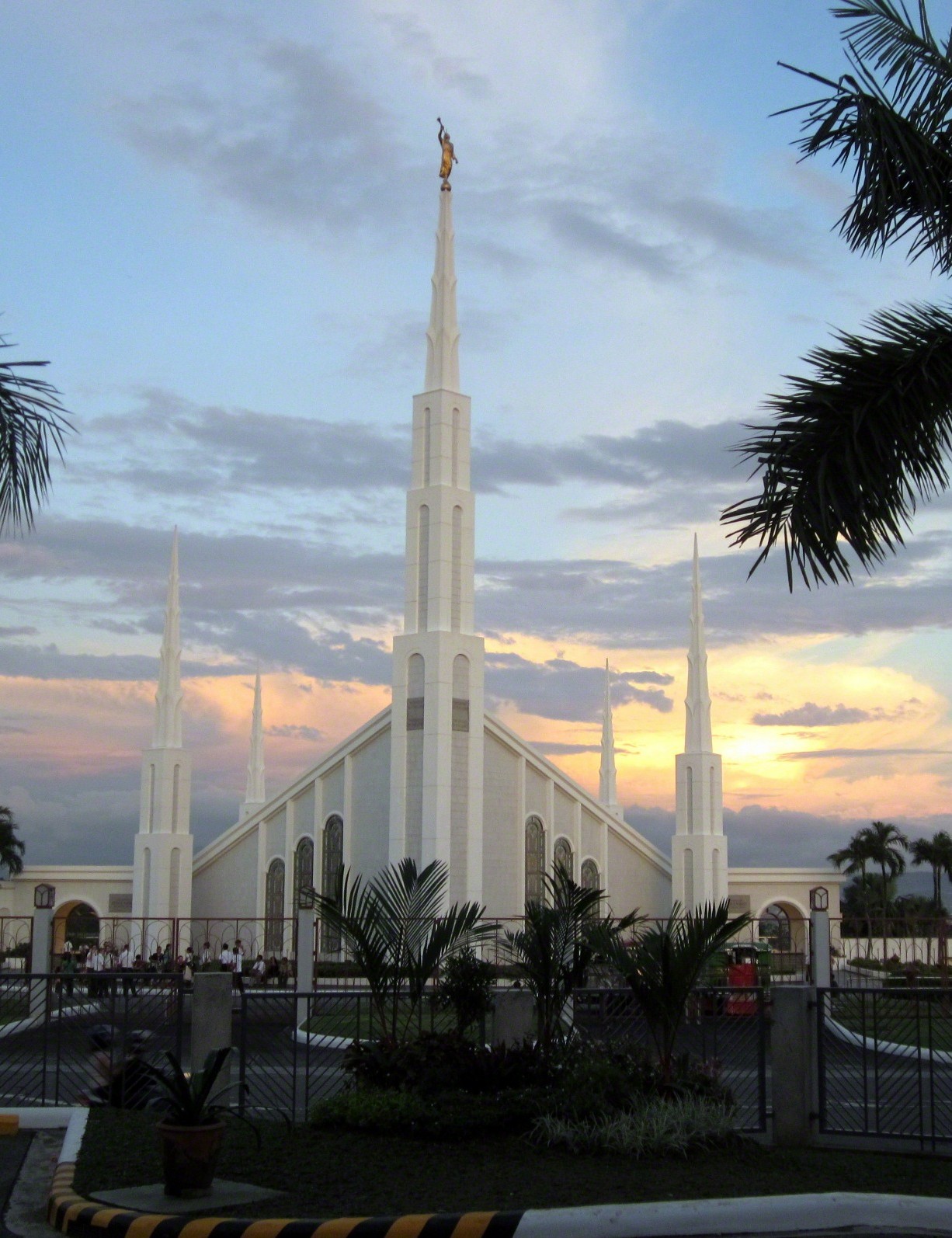
16. Church of the Blessed Trinity, Russia
Saint-petersburg.com reports this on the Church of the Blessed Trinity:
“The church was originally part of the estates of Prince Alexander Vyazemsky, Procurator-General and the first director of the nearby Imperial Porcelain Factory. The palace and park that he built on the banks of the Neva became a popular destination for the court of Catherine the Great, and the Empress herself gave Vyazemskiy 200,000 rubles to develop his estates. He spent the money on the Church of the Blessed Trinity, employing Nikolai Lvov as architect. Lvov, known as “the Russian Leonardo” for his wide-ranging talents, which included painting, poetry, translation, engineering and invention, had returned from studying in Rome with a desire to combine the shape of the Pyramid of Cestius with a rotunda in the style of the Temple of Vesta.
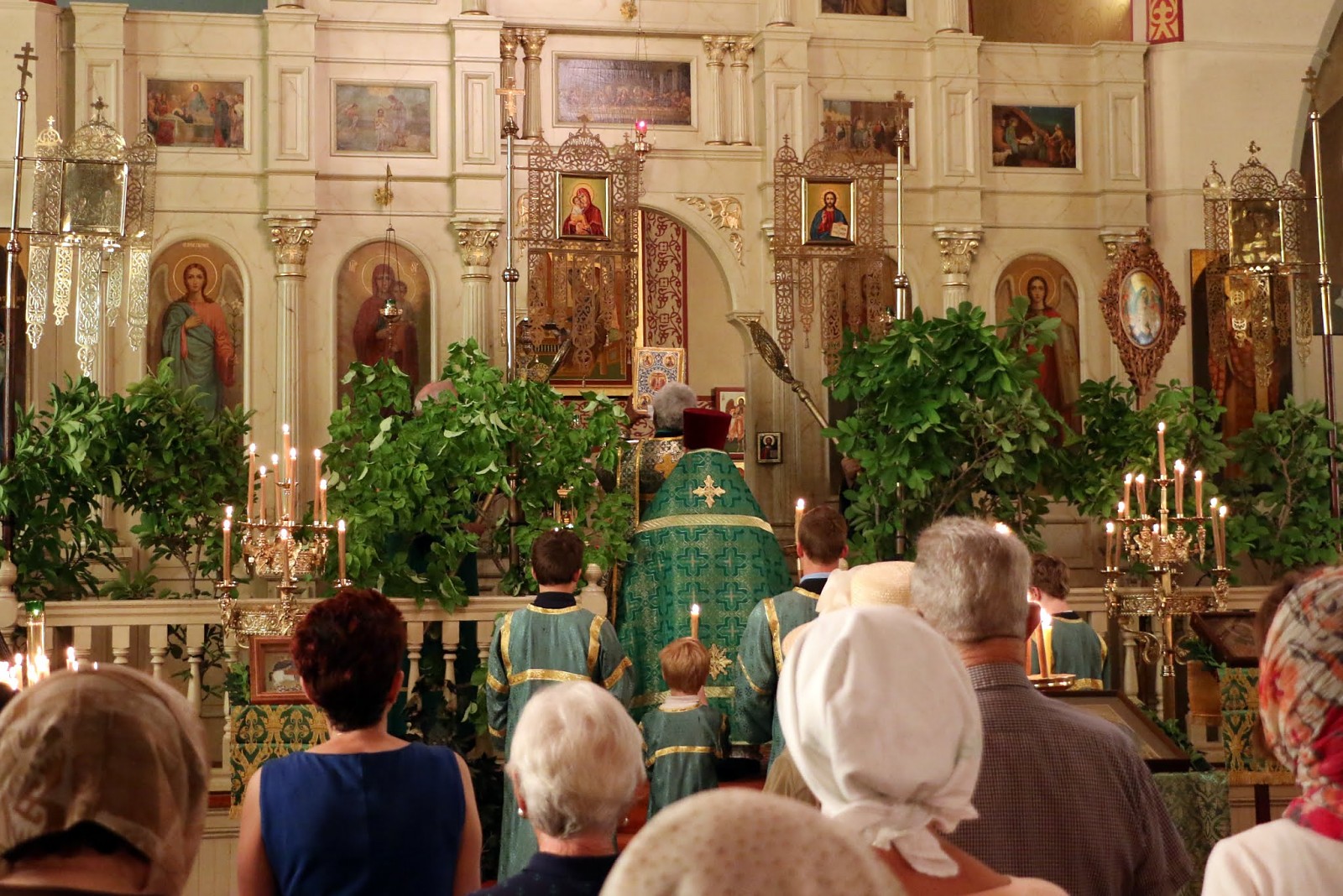
The result was the Church of the Blessed Trinity, built between 1785 and 1787. In fact, both forms have their antecedents in traditional Russian church architecture, with rotunda mimicking a medieval cupola, and the pyramid belltower closely resembling a traditional tent-roof. Their juxtaposition side by side at ground level, however, is entirely original.
The church’s rich interiors were also Lvov’s work, and include the painting of the cupola in deep blue, with gilt stars. Although the area around it has morphed in over two centuries from aristocratic estate to urban industry, the church has survived remarkably unscathed by history, and was only closed for eight years – 1938 to 1946 – in the Soviet period. As Lvov’s blueprints had survived, it was easy to restore the church to its original glory. The Church of the Blessed Trinity also gained a number of celebrated icons from other, less fortunate churches. Thanks to its longevity and charming design, the church remains one of the most popular in St. Petersburg with locals.”
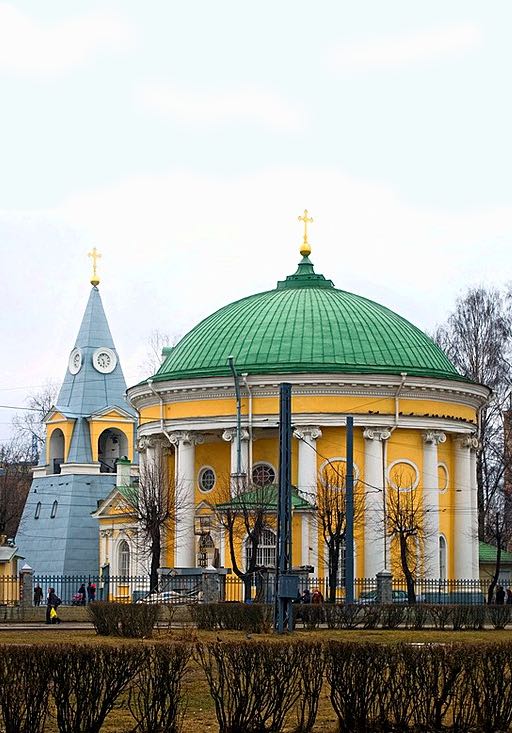
15. Church of the Epiphany, Russia
Saint-petersburg.com says this on the history of the Church of the Epiphany:
“Completed in 1888, the red-brick church had an intricately decorated facade, featuring tiled mosaics, gilded reliefs, and “kokoshniki” – medieval Russian decorations in the shape of a traditional headdress like a tiara. With its large arched windows, single gold dome and slender belltower, the church, standing right on the banks of the Ekateringofka River, recalls a ship in full sail.

The church’s interior was also richly decorated, with a marble alter and ivory iconostasis, as well as bright frescoes covering all the walls. Sadly, all theses precious decorations were plundered or destroyed after the Revolution, when the church was used variously as a warehouse, a soap factory and a garage. Shelled along with nearby port buildings during the Second World War, the ruined building was returned to the Orthodox Church in the early 1990s, and the massive restoration program is finally nearing completion.”
This church believes that baptism must be by immersion in water. Every January across the country, these believers jump into freezing waters to accomplish this Russian Orthodox recreation of Christ’s baptism.
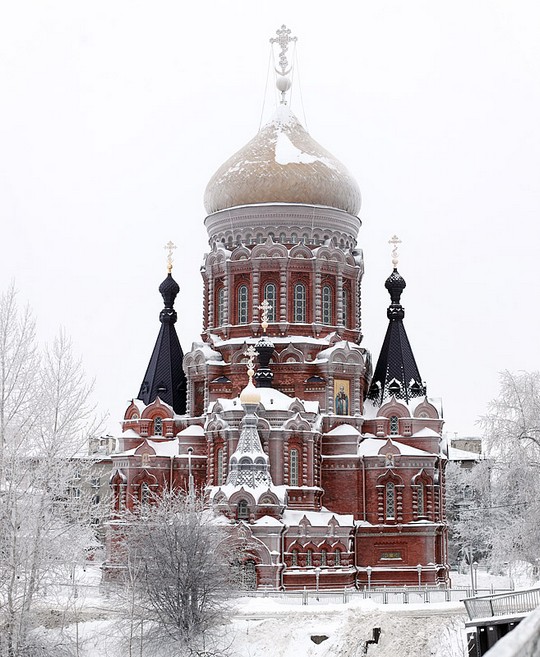
14. Abu Simbel Temple, Egypt
This incredibly gorgeous religious site is actually two temples facing each other. They were constructed from a sandstone cliff for the King Ramses II in honor of the gods Amon-Re and Re-Horakhte. Each of the four figures (below image) represent the King standing 66 feet above the ground.
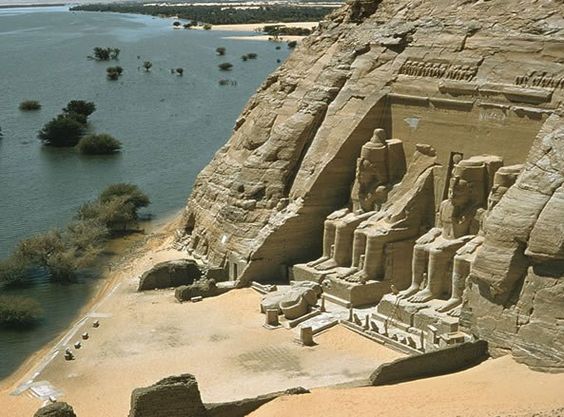
The temples had actually been buried beneath the sands over the centuries. It wasn’t until 1813 when they were rediscovered.
But the temples are not in their original location. The construction of a local dam threatened to destroy the structure. UNESCO and the Egyptian government paid for the structure to be rebuilt higher up on the cliff. It took 5 years for a team of engineers and specialists to move the temples to safety.
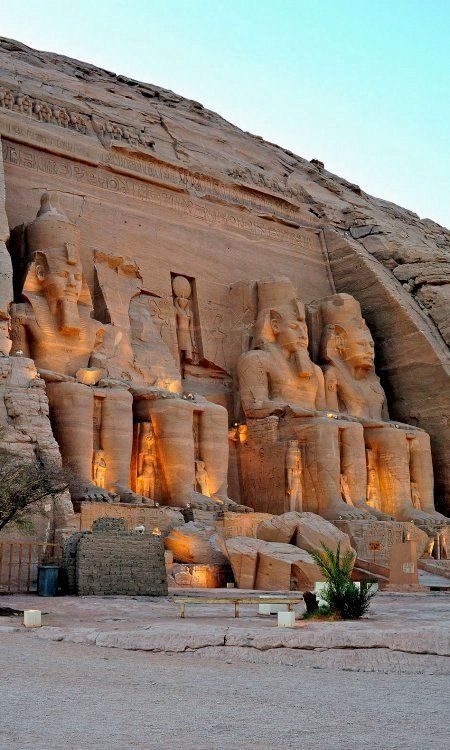
13. Saint-Michel d’Aiguilhe Chapel, France
With over 65,000 visitors to the Chapel every year, this religious site is one of the most popular in France.
The Chapel, which was consecrated in 961, is built upon a “rocher” which is to say a volcanic plug. The Rocher is believed to be over 2 million years old. The only way to access the Chapel is by climbing the 268 steps up the Rocher.
The Chapel and Rocher are home to many local legends one such legend is called the Maid’s Jump. Rochersaintmichel.fr says this of the Maid’s Jump:
“There is another legend that has been attached to the area from an early date. Médicis, who documents the tale, creates more questions than he answers in this story which is typical of St. Michel sites. A maid is accused of misconduct.
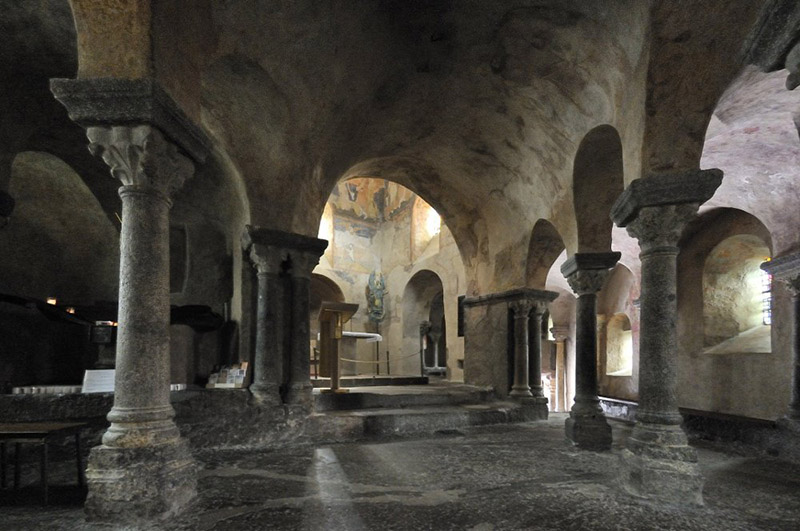
In order to prove her purity in this period of ‘Judgement of God’ style punishments, she is thrown into the air from the top of the Rocher (this supposes that the Rocher was accessible and therefore that the tale occurs after the fitting of the staircase.)
She survived without injury and is, therefore, proven to be pure. She even manages to survive a second time when she is asked to jump again as confirmation. Becoming conceited, she arrogantly decides to jump a third time and, this time, loses her life.”
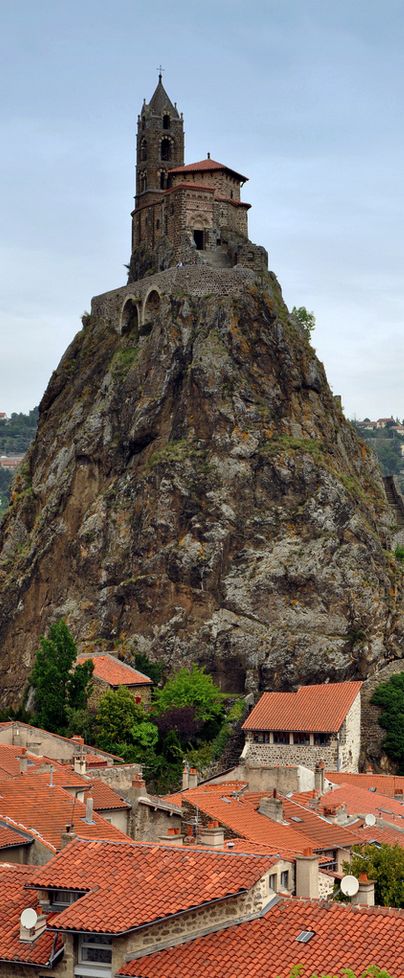
12. The Hague Netherlands LDS Temple, Netherlands
Called the “Sweet Lake Temple”, the Hague Netherlands LDS Temple was build between 2000 and 2002 in a city park. In order to make space for the Temple, the LDS church had to burn down on of its church-houses.
This stunning Temple makes the list because of the gorgeous water feature that surrounds the temple, making the mirrored reflection of the temple.
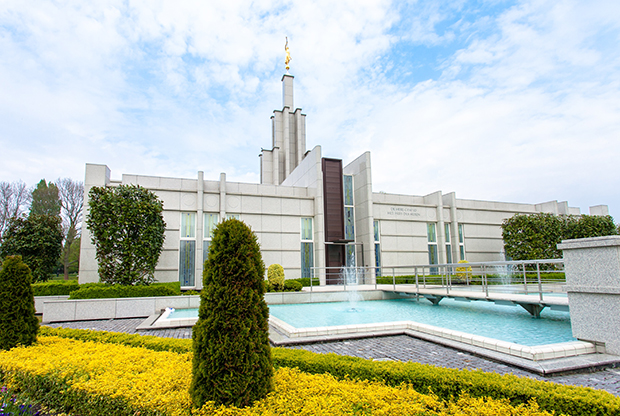
The gorgeous polished marble of the Temple and the windows almost all have a vertical line leading up towards heaven. The clean lines of the site add to the beauty of the city park that the Temple sits in.
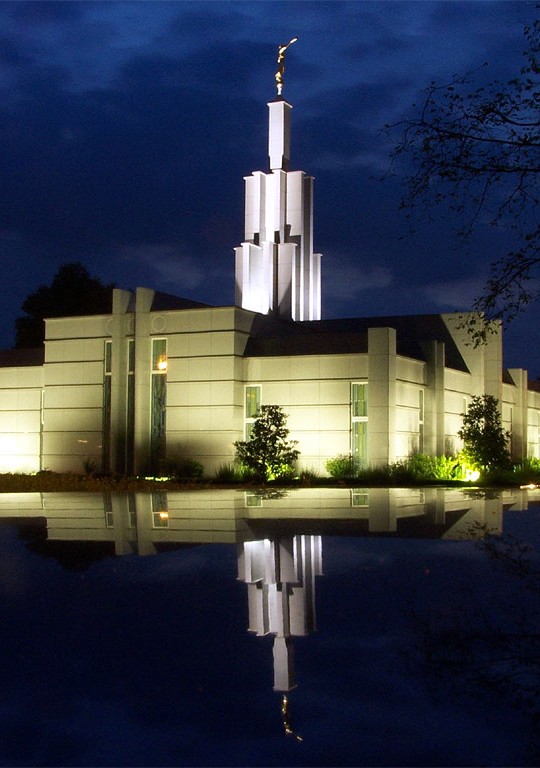
11. Palace of Gold, West Virginia, USA
Can you believe this religious site is in the US? It has been called “America’s Taj Mahal”.
The Palace of Gold website offers this on the history of this gorgeous religious site:
“Original plans for the Palace of Gold began in 1972 as a simple residence for Srila Prabhuapada, Founder of the International Society for Krishna Consciousness (ISKCON), during his stays at the New Vrindaban Community. As construction progressed, however, devotees became more and more ambitious in their design, wishing to create a residence befitting their beloved Spiritual Master. As plans became more ambitious, the devotees, themselves unpaid and with little experience, trained themselves in the traditional artisanal skills. The result surprised even those who built it. Countless sculptures, extensive woodwork, cut marble and semi-precious stones, carved teakwood, stained glass and cut crystal, as well as extensive gold leaf (more than nine pounds) all were used in the final design. Because of the enthusiasm of his young disciples, Prabhupada’s home resembled a Indian palace rather than a simple Holy man’s residence.
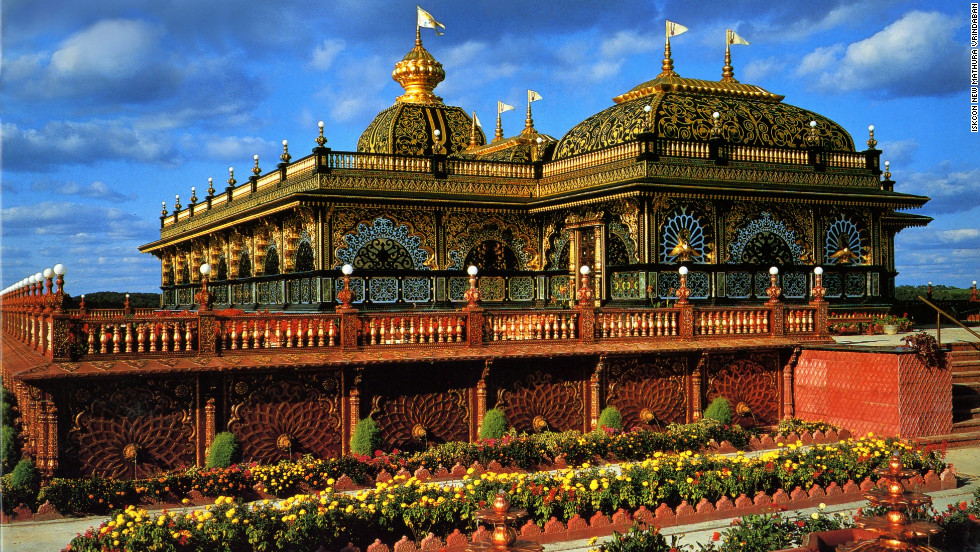
Sadly, His Divine Grace passed away in November of 1977 before he could witness its completion. Further determined to now complete the Palace as an enduring memorial to their founder, the devotees finally unveiled this magnificent gift of devotion in 1979 to widespread national media coverage. The Palace of Gold, with its iconic gold-leafed dome with a sacred flag on top, has since become one of West Virginia’s biggest tourist attractions with over 50,000 visitors a year.
As of mid 2011 an ambitious five-year, 4.27 million-dollar restoration effort has been underway to restore and renew the Palace to its original pristine condition.”
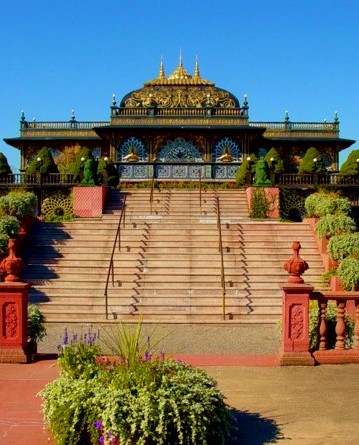
10. Ki Gompa, Spiti Valley, India
The Ki Gompa is a gorgeous ancient monastery found in India.
Amusingplanet.com reports this on the Ki Gompa monastery:
“(Ki Gompa is) a Tibetan Buddhist monastery located on picturesque hilltop at an altitude of 4,166 metres above sea level, close to the Spiti River, in the Spiti Valley of Himachal Pradesh, India. The monastery has the distinction of being the oldest and the biggest in the Lahaul and Spiti district of Himachal Pradesh and a religious training centre for Lamas. It is home to around 300 lamas who receive their religious education here.
Key Gompa is said to have been founded by Dromtön (Brom-ston, 1008-1064 CE), a pupil of the famous teacher, Atisha, in the 11th century. This may however, refer to a now destroyed Kadampa monastery at the nearby village of Rangrik, which was probably destroyed in the 14th century when the Sakya sect rose to power with Mongol assistance. Nevertheless, it is believed that the monastery is at least a thousand years old. There was even a celebration of its millennium in 2000 in the presence of the Dalai Lama.
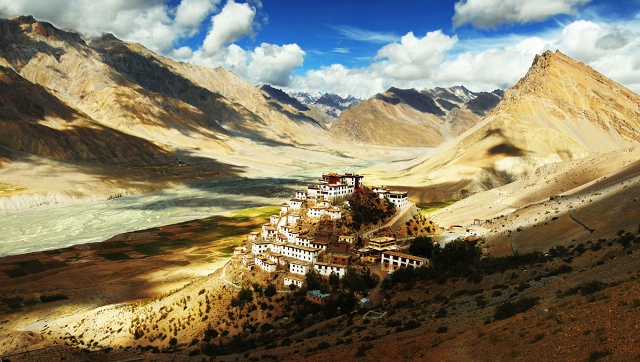
Key (sic) Gompa was frequently attacked by the Mongols, such as the 17th century raid during the reign of the Fifth Dalai Lama. In the 19th century it was attacked and looted by various armies engaging in fights in the region. This was followed by a devastating fire in the 1840s. In 1975 a violent earthquake caused further damage to the building.
Repeated attacks on the monastery resulted in frequent renovation and reconstruction work which in turn has given rise to irregular box like structure. The building has the appearance of a defensive fort rather than a monastery. Today, the monastery is renowned religious training center for the Lamas who can be seen dancing, singing and playing on their pipes and horns.”
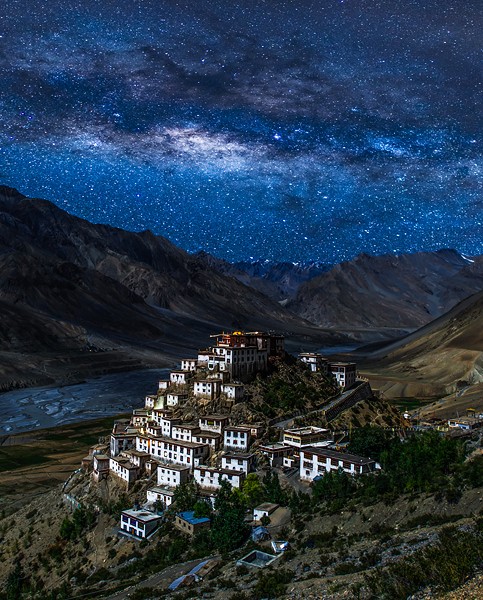
9. Cathedral Basilica of Saint Louis, Missouri, USA
While the main structure was completed in 1914, the whole Cathedral was not finished til 1988, though construction was ongoing for the decades in between, (excepting during WWII).
Over it’s history, the Cathedral has had five designate architects and several lead artistic designers (for stained glass windows and mosaics).
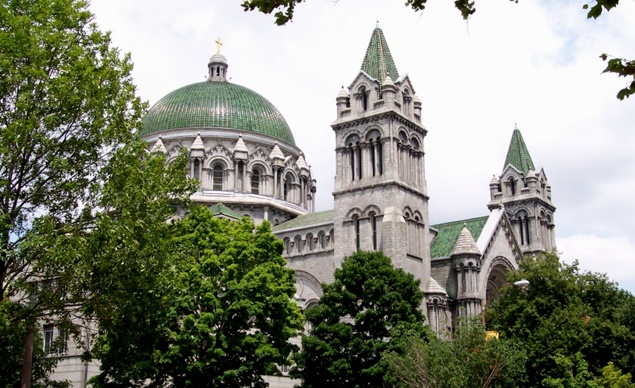
The Cathedral was given Basilica designation in 1997, by Pope John Paul the II. To show it’s Basilica status, the Cathedral has two special symbols. The first is a tintinnabulum or bell and the second is an ombrellino or umbrella.
The Cathedral Basilica of Saint Louis website says this on the difference between cathedrals and basilicas:
“A Cathedral is the “bishop’s church,” the principal church/seat of the Archbishop of a particular diocese. A Basilica is a place of worship of special distinction and displays two ornamental symbols signifying its status: the tintinnabulum (bell) and ombrellino (umbrella). A Cathedral can be named a Basilica by the Roman Catholic Pope, and it retains that designation forever. The Cathedral Basilica of St. Louis is both a Cathedral AND a Basilica and is, therefore, both the Church of the Archbishop and place of worship of special distinction within the Archdiocese of St. Louis.”
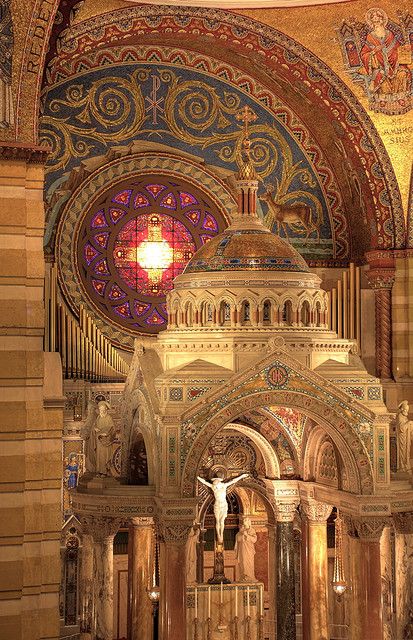
8. Thorncrown Chapel, Ozarks, USA
This gorgeous religious site makes our list because of its brilliant balance between steel and nature.
The Thorncrown Chapel website says this about the Chapel and its unique design:
“Nestled in a woodland setting, Thorncrown Chapel rises forty-eight feet into the Ozark sky. This magnificent wooden structure contains 425 windows and over 6,000 square feet of glass. It sits atop over 100 tons of native stone and colored flagstone, making it blend perfectly with its setting. The chapel’s simple design and majestic beauty combine to make it what critics have called “one of the finest religious spaces of modern times.”
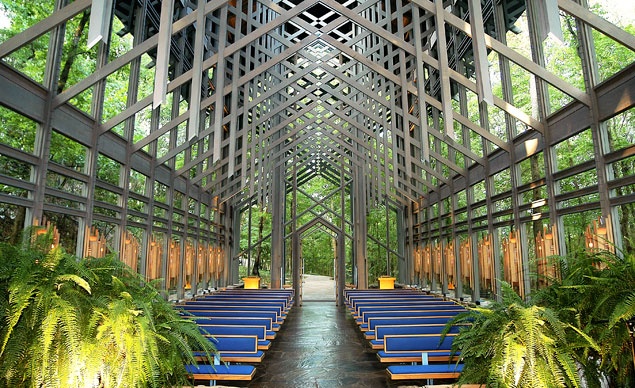
Since the chapel opened in 1980, over six million people have visited this woodland sanctuary. It has won numerous architectural awards such as the American Institute of Architects’ Design of the Year Award for 1981 and AIA’s prestigious 25 Year Award. Recently, members of the American Institute of Architects placed Thorncrown Chapel fourth on its list of the top buildings of the twentieth century.”
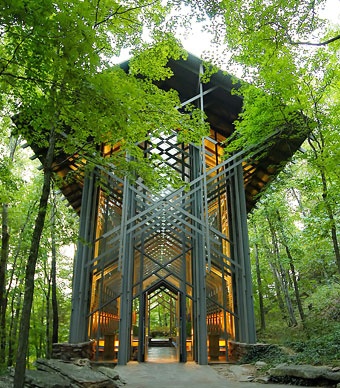
7. Madonna Del Sasso Monastery, Switzerland
The Madonna Del Sasso Monastery has submitted and application to become another of UNESCO’s world heritage protected sites.
The website for the Madonna Del Sasso Monastery offers many details about the UNESCO application and the fundraising attempts to save “The Holy Mountain” from further destruction to the artworks and architecture. A project which is estimated to cost 10 million francs for just the first stage of reconstruction.
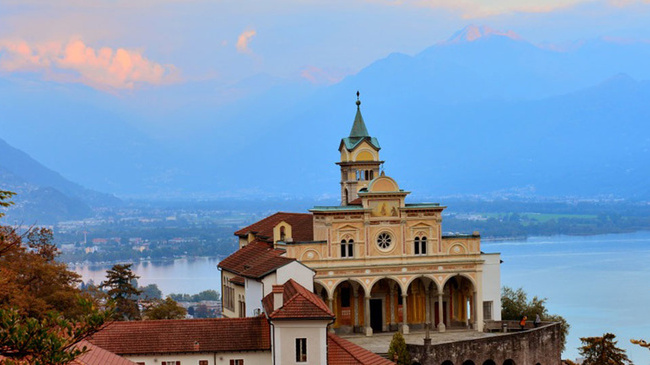
The site provides this for the history of the monastery:
“According to tradition, the sanctuary was founded after the miraculous apparition of the Virgin Fra ‘Bartolomeo Dishes from Ivrea, the convent of San Francesco in Locarno, in 1480, on the eve of the Feast of the Assumption (August 15). At the top of the mountain arise then the first two chapels dedicated to the Virgin Advocate (the original core of the Church of the Assumption) and the Pietà, consecrated in 1487 and, at its foot, the Church of the Annunciation, consecrated in 1502. The result is the ‘idea of erecting a sacred mountain where recreate the holy places, probably like the one made by the Franciscan friar Bernardino Caimi in Varallo Sesia in the late fifteenth century. The complex is spread mainly during the seventeenth century with the construction of the chapels of the Sacred Mountain and the transformation of the sanctuary.”
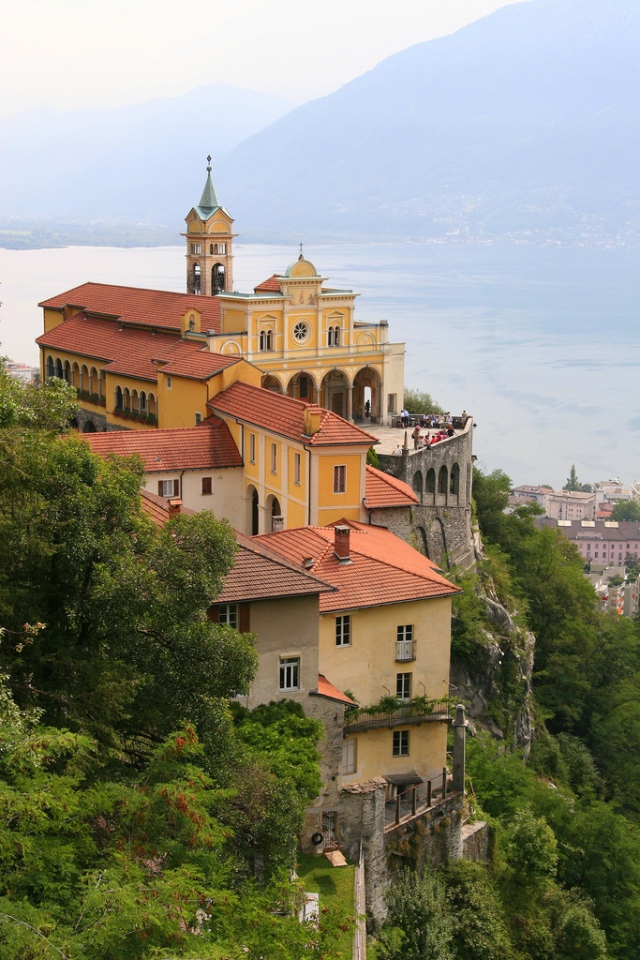
6. Ostrog Monastery, Montenegro
Visit Montenegro says this the Ostrog Monastery:
“Monastery Ostrog, a miracle built by nature and human interaction, carved almost in its entirety in a vertically positioned mountain cliff, is today the pearl of Montenegrin spirituality which is visited by more than a hundred thousand pilgrims from around the world and of travellers of all religions every year.
It is one of three most visited Christian destinations on the planet with its cave-like chapel and the Monastery complex that preserves the sanctity of Saint Basil the , Orthodox Christian Saint of Miracles.
All of Montenegrin sprituality, belief s and cultural treasures found their home high up in the Ostrog cliffs. This breathtaking destination will fill your soul with high elevated feelings of devotion and reverence to God.”
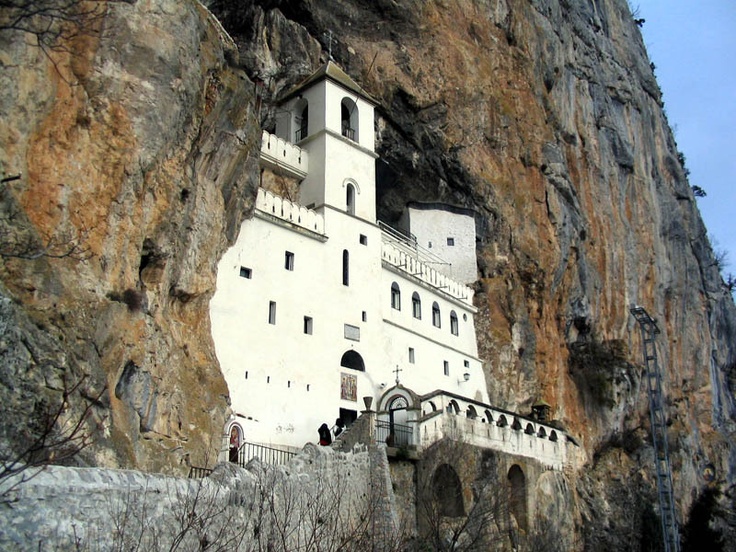
The Ostrog Monestary is also home to several legends, particularly about Saint Basil of Ostrog:
“Many legends and myths exist today about the life of Saint Basil of Ostrog. In one of these stories, Saint Basil thru a seed of a pear he just ate over the railing onto the cliffs, and in the morning a large tree has grown thru the rocks with flowers on one side and pears on the other. This is believed to happen in the month of February.
According to another story Saint Basil, who was also know as an expert doctor, needed parsley immediately and nobody had some. He planted seeds of parsley that night and the next morning he had grown parsley available for use. This same parsley kept growing year after year in a corner where it was not exposed to sun or rain.”
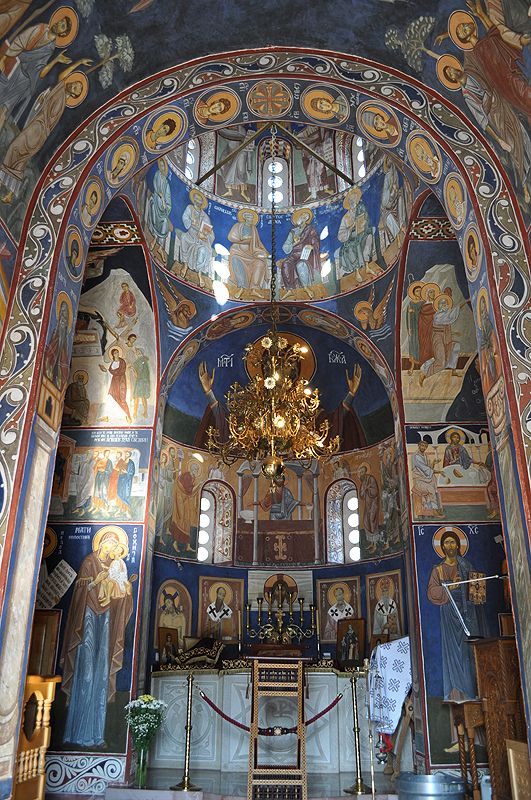
5. Kiev Pechevsk Lavra, Ukraine
Another UNESCO protected site, this gorgeous structure makes our list because of the stunning gold roof and beautiful stain glass windows.
UNESCO says this about the Kiev Pechevsk Larva:
“The Kiev-Pechersk Lavra is an architectural ensemble of monastic buildings situated on the plateau overlooking the right bank of the Dnieper River. The ensemble was formed over many centuries in organic combination with the landscape, and acts as a general urban dominant. Founded by St. Anthony and St. Theodosy in the 11th century, the monastery became a prominent spiritual and cultural centre that made a significant contribution to the development of education, art and medicine. The architectural ensemble of Kiev-Pechersk Lavra comprises unique surface and underground churches from the 11th to the 19th centuries, in a complex of labyrinthine caves that expands more than 600m, as well as domestic and household buildings from the 17th to the19th centuries. The architectural ensemble acquired its modern aspect as a result of construction activities in the 17th to the 18th centuries in the heyday of the Ukrainian Baroque. The main monuments of the Kiev-Pechersk Lavra ensemble are the Dormition Cathedral, the Trinity Gate Church, the Great Bell Tower, the Church of All Saints, the Refectory Church, the monastery defensive walls with towers, the cave complexes of St. Anthony (Near) and St. Theodosy (Far) with surface churches, the Exaltation of the Cross and the Nativity of the Virgin and the Church of the Saviour on Berestovo.
For centuries, the Kiev-Pechersk Monastery, with relics of saints buried in caves, has been one of the most important Christian pilgrimage centres in the world. ”
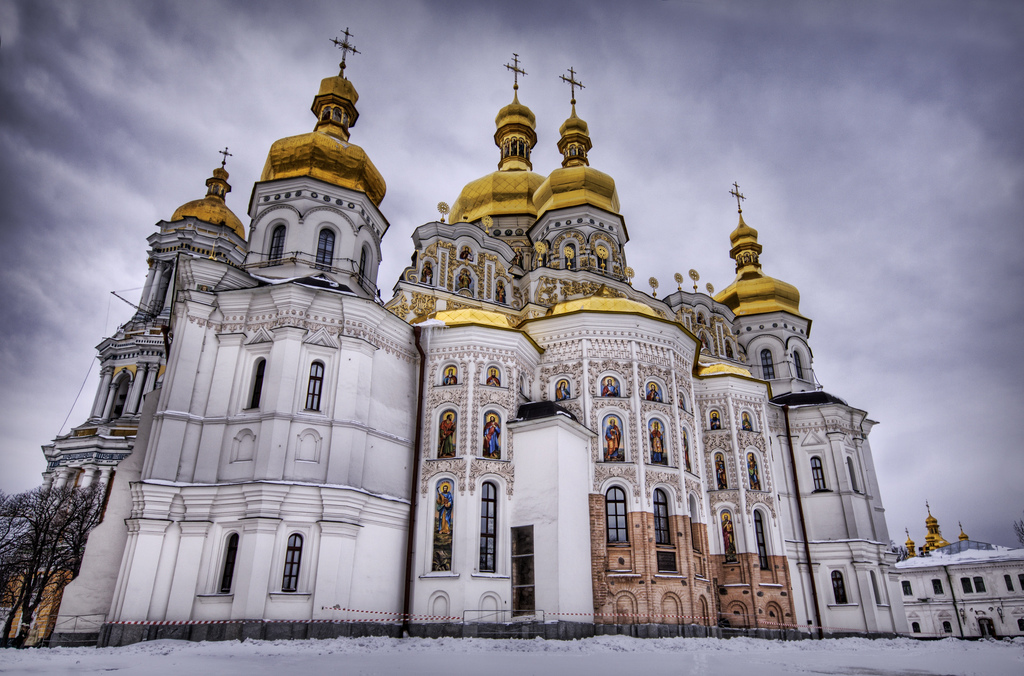
Mykiev.info says this about the legends of the caves of Kiev Pechevsk Larva:
“Lavra caves is the system of underground passages, divided into two parts — Far and Near Caves. First annalistic mentions of Lavra Caves are related to 1051. At first caves were occupied by the monks who lived their, later in caves started to bury dead settlers of the monastery. In particular there are remains of Chronicle Nestor the author of the «Story of bygone years», Ilya Muromets — Russian epic hero and the relics of imperishable Lavra saints.
In some underground cells lived hermit monks, who devoted their lives to prayers — in the walls of cave passages had remained small holes through which they got water and food.
There are legends about the extent of Lavra caves, — it’s said that underground passages stretches under the Dnieper and also connects Lavra with other monastery caves of Kiev and Chernigov.”

4.The Vatican, Vatican City
The center of the Catholic world the Vatican is its own nation, though it is within the boundaries of Rome. The Vatican is listed as, according to its website, “both the official residence of the Pope (Papal Palace) and also includes Museums such as the Sistine Chapel which includes the famous paintings by Michelangelo (like the ‘Last Judgment’ painting).”
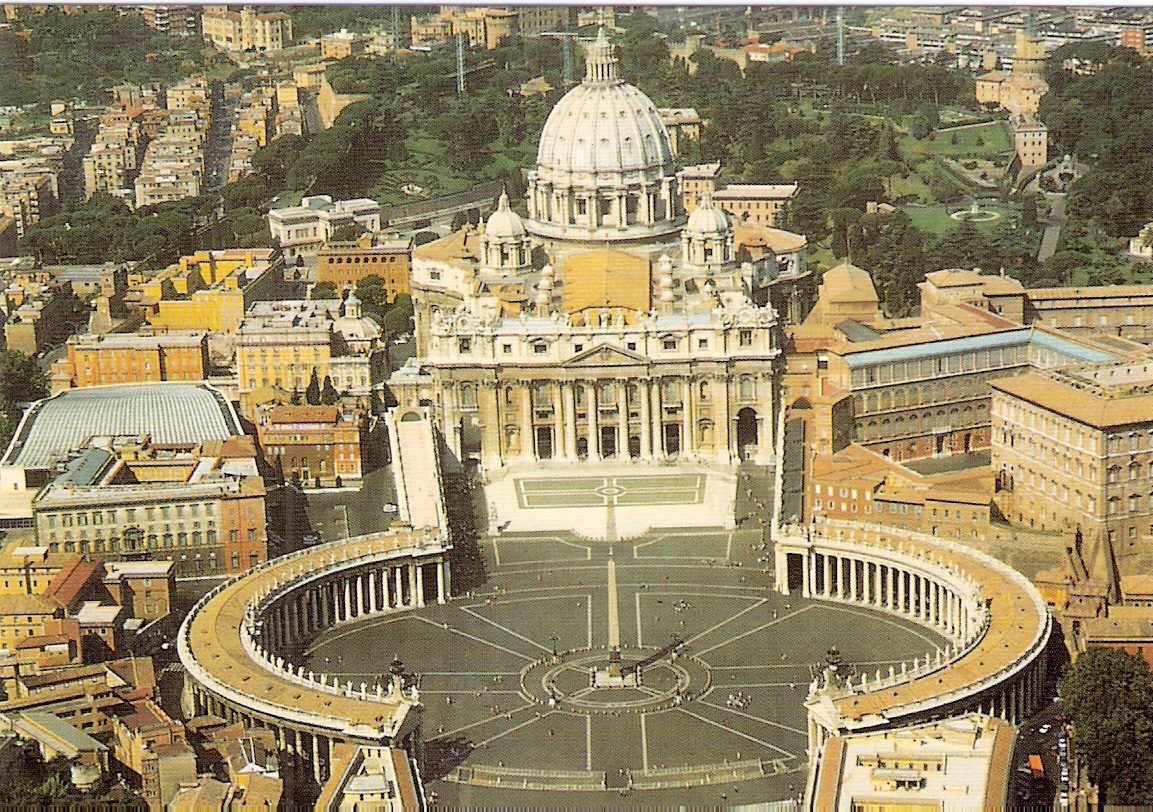
This small country has less than 1000 citizens and sits in less than half a square kilometer of space.
The absolute beauty of all of the buildings and the incredible works of art make Vatican City one of the most gorgeous religious sites in the world.
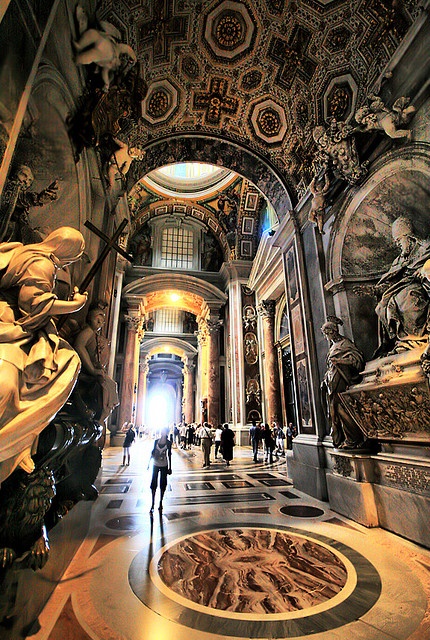
3. Ohel Jakob Synagogue, Germany
Another stunning structure to make our list is the Ohel Jakob Synagogue in Germany. This gorgeous building features both steel and natural stone cut into a pattern. This building was completed in 2006.
Bavaria.us says this of the Ohel Jakob Synagogue:
“With nearly 600 seats, Munich’s main synagogue Ohel Jakob forms the heart of the local orthodox Jewish community, which numbers around 9,500 people. The “corridor of remembrance” linking the synagogue with the community centre commemorates the 4,587 Jewish citizens of Munich who were murdered by the Nazis.
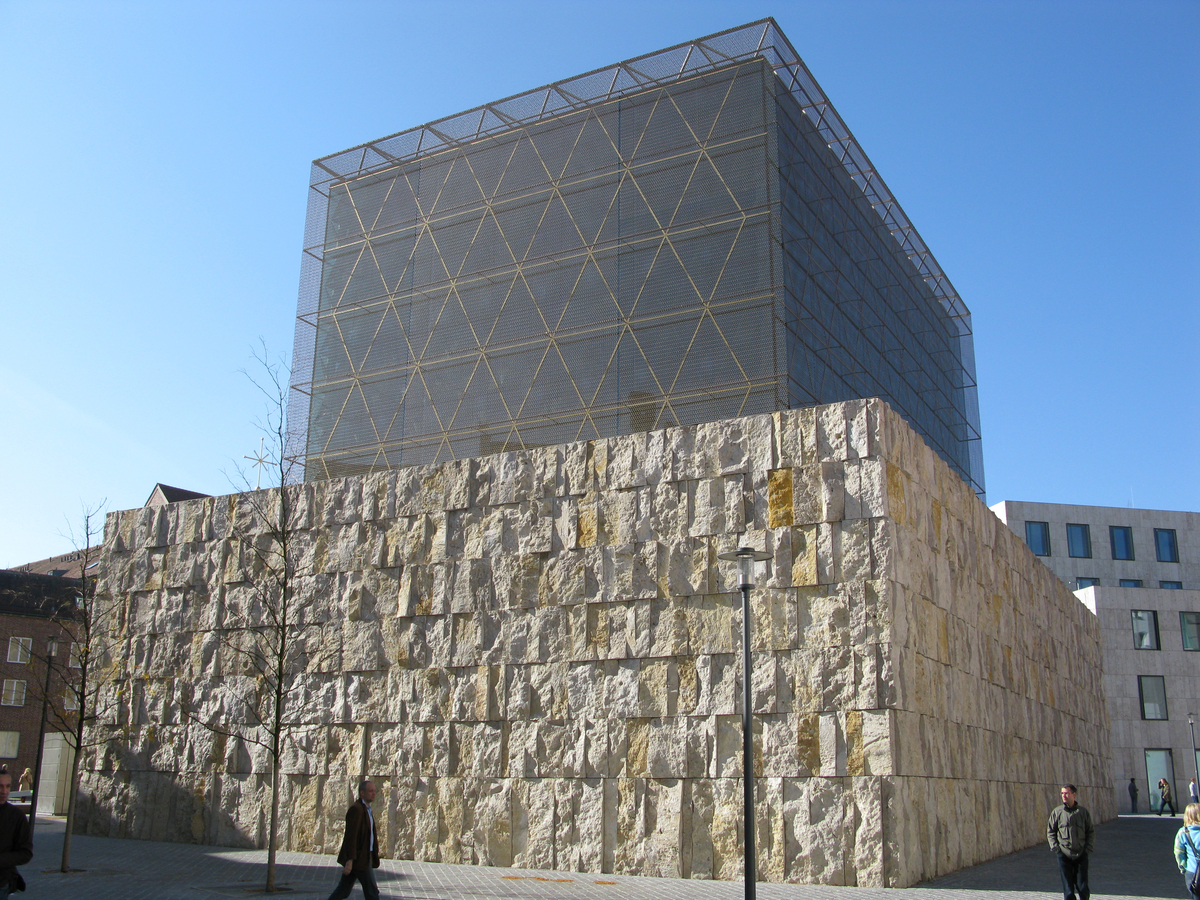
The most striking part of the Jewish Centre is the east-facing synagogue. The building, which stands apart from the other buildings in the square, takes the form of an intricate steel and glass cube set on a solid stone base. Evocative of Solomon’s Temple, the base provides a protective shell for the prayer room. The multi-layered glass construction, covered in a bronze mesh, symbolises the tents used by the Israelites in the wilderness. This is mentioned in the fourth book of the Old Testament in the line “How goodly are thy tents, O Jacob!”, the quote engraved in gold at the entrance to the synagogue.”
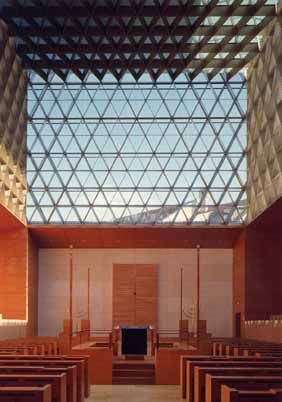
2. Slat Alfassiyine, Morroco
Another gorgeous synagogue to make our list is Slat Al Fassiyine in Fez, Morroco.
The structure makes our list for not only its brilliant stain glass windows and woodwork, but also because of the amazing story behind the restoration of the synagogue.
The North Africa Post said this in an article about the synagogue’s rededication:
“A synagogue has been refurbished and inaugurated by a Head of a government. This is no news, if the event is taking place somewhere in Europe, the Americas or inside Israel. But when the synagogue is located inside the walls of the spiritual capital of an Islamic State, when it is dedicated, after having been rehabilitated, by the head of an Islamist party, and when the dedication ceremony is placed under the aegis of this country’s leader, the news is actually breaking, shattering, unprecedented.
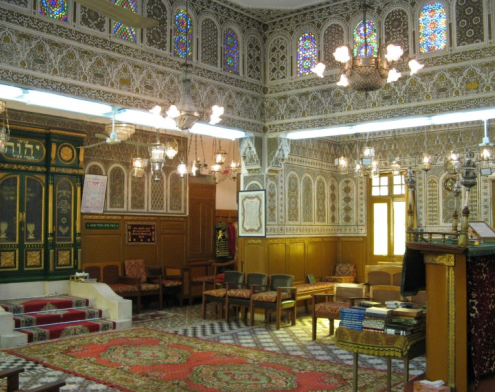
This unprecedented event actually took place earlier this week in Morocco, precisely in Fes, when Abdelilah Benkirane, the head of the government and the head of the Party for Justice and Development (PJD) which is leading a governmental coalition in the North African country, made the trip to Fes to preside over the dedication ceremony of the “Slat Alfassiyine” synagogue, placed under the patronage of King Mohammed VI.
This important Jewish place of worship, dating back to the 17th century, has been renovated thanks to the support of various private individuals, including the late Simon Levy, the Toledanos, and the Berdugos, the Foundation for Moroccan Jewish Cultural Heritage, the Jewish community of Fez, and also thanks to donations by Germany.
The “Slat Alfassiyine” synagogue is one of several synagogues located in the Mellah, the Jewish district in the city, which have been closed for years but which have been or are being restored with private donations or with UNESCO funds.
The Slat Alfassiyine Snagogue is a landmark monument of Fez, which is classified as World Heritage by UNESCO, and which also hosts Al Karaouine University, one of the oldest and largest spiritual and educational centers in the Muslim world that was founded in 859 by Fatima Al Fihria.”
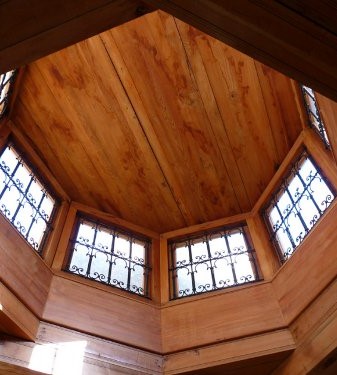
1. Borobudur Temple Compound, Indonesia
The #1 gorgeous religious site on our list is here because of the incredible vastness of this site.
Another protected site UNESCO says this on the gorgeous Borobudur Temple Compound:
“The Borobudur Temple Compounds is one of the greatest Buddhist monuments in the world, and was built in the 8th and 9th centuries AD during the reign of the Syailendra Dynasty. The monument is located in the Kedu Valley, in the southern part of Central Java, at the centre of the island of Java, Indonesia.
The main temple is a stupa built in three tiers around a hill which was a natural centre: a pyramidal base with five concentric square terraces, the trunk of a cone with three circular platforms and, at the top, a monumental stupa. The walls and balustrades are decorated with fine low reliefs, covering a total surface area of 2,520 m2. Around the circular platforms are 72 openwork stupas, each containing a statue of the Buddha.
The vertical division of Borobudur Temple into base, body, and superstructure perfectly accords with the conception of the Universe in Buddhist cosmology. It is believed that the universe is divided into three superimposing spheres, kamadhatu, rupadhatu, and arupadhatu, representing respectively the sphere of desires where we are bound to our desires, the sphere of forms where we abandon our desires but are still bound to name and form, and the sphere of formlessness where there is no longer either name or form. At Borobudur Temple, the kamadhatu is represented by the base, therupadhatu by the five square terraces, and the arupadhatu by the three circular platforms as well as the big stupa. The whole structure shows a unique blending of the very central ideas of ancestor worship, related to the idea of a terraced mountain, combined with the Buddhist concept of attaining Nirvana.

The Temple should also be seen as an outstanding dynastic monument of the Syailendra Dynasty that ruled Java for around five centuries until the 10th century.
The Borobudur Temple Compounds consists of three monuments: namely the Borobudur Temple and two smaller temples situatued to the east on a straight axis to Borobudur. The two temples are Mendut Temple, whose depiction of Buddha is represented by a formidable monolith accompanied by two Bodhisattvas, and Pawon Temple, a smaller temple whose inner space does not reveal which deity might have been the object of worship. Those three monuments represent phases in the attainment of Nirvana.
The temple was used as a Buddhist temple from its construction until sometime between the 10th and 15th centuries when it was abandoned. Since its re-discovery in the 19th century and restoration in the 20th century, it has been brought back into a Buddhist archaeological site.
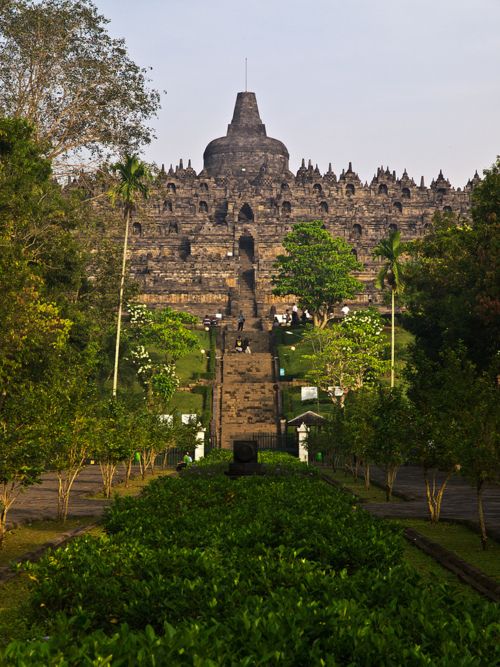
There are 20 of the Most Gorgeous Religious Sites Around the World. Hopefully you get a chance to visit a few in person!
